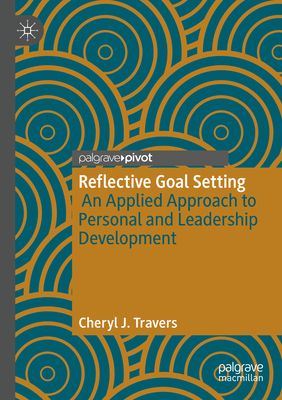This content contains affiliate links. When you buy through these links, we may earn an affiliate commission.
It’s that time again. With a changing of the calendars, readers are wondering how to best create their reading goals in the new year. No one likes to look back and discover they didn’t accomplish any of their New Year’s resolutions. So, let’s celebrate this new start by coming together and creating a more peaceful reading year with a set of reading goals you can actually complete.
I’ve always been a fan of pulling some research from the depths of academia to help my personal life. When looking to create achievable reading goals in the new year, I naturally look towards the good people in psychology. So, let’s take a look at the research and apply it to reading goals for the new year.
Goal Setting Theory is the idea that when an individual defines a specific goal with an objective or aim, they are more likely to accomplish the task. Essentially, it says that a person is less likely to achieve a vague goal like “I want to read more diverse books.” Instead, Goal Setting Theory posits a person is more likely to finish a specific goal with a specific aim, like “This year, I want to read five books from authors of color and five books from queer authors.” When it comes to creating achievable reading goals in the new year, Goal Setting Theory is a great place to start, but researchers have gone a bit further since then.
Achievable Reading Goals and Reflective Goal Setting
In Reflective Goal Setting: An Applied Approach to Personal and Leadership Development, Cheryl J. Travers builds on decades of Goal Setting Theory research and looks into the benefits of Reflective Goal Setting or “documenting and monitoring goal attempts and reflecting on the process as it evolves” through journaling or writing down goals. I think this approach is ideal for people who already track their reading throughout the year. If you know you are the kind of reader who monitors what they read through Goodreads, StoryGraph, or even the Book Riot reading log, then Reflective Goal Setting is an excellent option for you.
Now, let’s get into the weeds of what Reflective Goal Setting actually requires readers to do. Travers outlines a five-stage process: Enhancing Self-Awareness, Selecting Suitable Goals, Visualising Successful Goal Behaviours, Formulating a Goal Statement, and Putting Goals into Practice.
Step 1: A Reader’s Guide to Enhancing Self-Awareness
Enhancing Self-Awareness has readers evaluate their behavior with an aim toward self-improvement. Although this sounds daunting, Enhancing Self-Awareness gives parameters to reflection as a vital part of setting new goals. Readers evaluate their past reading behavior and identify if their values match their behavior to consider what will be important in future reading goals. If you track your reading, this is a great chance to review your reading tracker of choice to see what books you read last year. Knowing the type and number of books you read before can allow you to establish a baseline for achievable future goals. As an example, this step is a good chance to notice something like “Last year, out of the 20 books I read, five were written by authors of color.”
Step 2: Selecting Suitable Goals for Readers
Now, for readers, Selecting Suitable Goals includes using your enhanced self-awareness to determine your specific future goals in an area that you would like to improve. Here, a reader assesses a specific past reading goal or scenario to create achievable reading goals. As a reader, if you are looking at the broad category of reading diversly, you may notice you care more about improving your knowledge of a specific area of diversity that was missing from last year. Selecting Suitable Goals means noticing you only read two sapphic books last year and deciding to write down your new goal focus on sapphic books.
Step 3: Readers Visualising Successful Goal Behaviours
In step 3, Visualising Successful Goal Behaviours, readers will finally get to create a list of measures of progress and success. It’s time for you to write down what you think will be required to achieve your reading goal. For example, if you know you typically read two books a month and you want to read six sapphic books next year, one measure of progress would be reading a sapphic book every other month. Once you determine these goal behaviors, you can record what Travers defines as a “performance gap” or the “gap between where you are currently and where you will be when your goal has been achieved.”
Step 4: Formulating a Reading Goal Statement
The last step in creating achievable reading goals in the new year is Formulating a Goal Statement. After evaluating your past reading behavior, selecting a reading goal, and visualizing successful reading goal behavior, you are finally ready to write down your goal statement. Now, you must identify a specific reading goal to work on, select a specific approach to achieving that reading goal with measurable criteria, and create a detailed reading goal statement.
For example, a reading goal statement might say, “I will read six sapphic books next year by reading one sapphic book every other month.” More detailed goal statements can include additional goals, measures of progress, and/or specific dates you would like to check in on. So, a more detailed goal statement might say, “I will read six sapphic books next year and three books from Indigenous authors. To achieve this goal, I will read a sapphic book every other month and a book from an Indigenous author every quarter. I will also measure my progress by checking in six months from now to see if I have read three sapphic books and one to two books from Indigenous authors.”
Step 5: Putting Reading Goals into Practice
Technically, Putting Goals into Practice is in the purview of another article. However, to wrap things up, the final step of Travers’ book requires readers to write goal reflections throughout the year, where you review your measurement criteria. Hopefully, following the prior Reflective Goal Setting steps set you up for success. Now, you can create achievable reading goals in the new year and feel accomplished as you write down your progress.
Now Go Create Achievable Reading Goals in the New Year!
Every reader will have different goals they would like to achieve and different ways that work best for them. Reading goals are simply one great way of reading more intentionally and broadening the kinds of books you read. Whatever you want to change about your reading, I hope this helps you achieve your goals.
For more tips on setting reading goals, check out:

